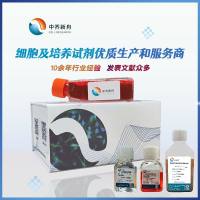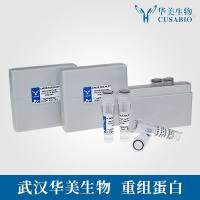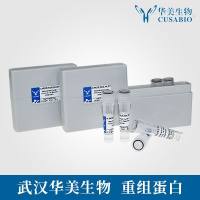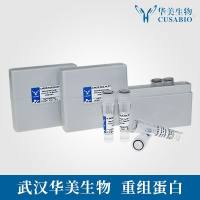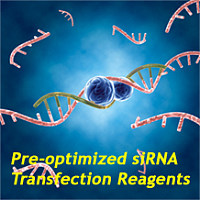Development of techniques for primary culture of C. elegans embryonic neurons
互联网
Development of techniques for primary culture of C. elegans embryonic neurons
Laird Bloom
MIT
from Ph.D. thesis, Massachusetts Institute of Technology, 1993
Introduction
One of the major limitations of the study of axonal outgrowth in C.
elegans is that direct manipulation of the environments of specific
neurons is not possible, either in partially-dissected preparations or
in culture. In experimental systems in which culture is available,
detailed studies of the interactions of growing axons with their
substrates are possible, including antibody perturbation studies of
cell-surface molecules, direct observation of growth cone behavior, and
pharmacological manipulation of growing axons' electrical activity,
second messengers, or cytoskeleton. In Drosophila, primary culture of
neurons from mutant strains has enabled study of membrane cycling in
shibire mutants and the electrophysiological defects in nap mutants (Wu
et al., 1983) . The availability of a technique for the culture of C.
elegans neurons would provide a new method for the analysis of mutants
defective in neuronal development and function. In particular, several
genes required for normal axonal outgrowth are believed to encode
molecules that affect the cytoskeleton, membrane structure, interaction
with the extracellular matrix, and signal transduction (Leung-Hagesteijn
et al., 1992; T. Otsuka et al., in preparation; Oshima, R. Steven, A.
Ruiz, J. Mancillas, and J. Culotti, personal communication). A
technique for studying these processes in mutant cells lacking specific
molecules in a defined environment might provide information applicable
to the study of axonal outgrowth in a variety of species..
No technique for culturing C. elegans neurons has been published.
Hedgecock et al. (1987) cited unpublished observations that embryonic
cells plated on an adhesive substratum send out single, unbranched
processes, but gave no indication of the conditions used. Conditions
that allow normal cell division to occur after embryos are permeabilized
or partially dissociated and reassembled have been reported. L. Edgar
(personal communication) has developed a technique for removing the
eggshells of embryos as young as the 1-cell stage by a combination of
enzymatic digestion and pipetting through a narrow aperture. These
embryos, which remain surrounded by a membrane, continue to divide to
produce up to 500 cells, and normal differentiation of the major
lineages occurs (as judged by markers for gut, muscle, and germline).
Occasional neuronal processes have been observed in these permeabilized
embryos (L. Edgar, personal communication). Blastomeres that are
separated, reassociated, and cultured under these conditions continue to
divide and differentiate normally (Goldstein, 1992).
The experiments described below were designed to extend these
techniques to the growth of large numbers of dissociated embryonic
cells. The goal was to define media, substrates, and cell isolation
techniques that would permit neuronal differentiation and axonal
outgrowth in short-term cultures. Because long-term culture was not
anticipated, efforts to maintain sterility were made only in preparation
of media. Bacterial and fungal contamination was sometimes evident in
three-day cultures, but not before this. Cells were kept on ice or at
room temperature during initial experiments with cell isolation
procedures. As this appeared to make little difference in the health
of the cells, experiments with different substrata and media were
conducted with cells kept at room temperature throughout the procedure.
Experimental Procedures
Details of the procedures used are discussed in the text.
Cultures were observed under Nomarski optics using a 100x Planapo
objective lens on a Zeiss Axiovert 10 inverted microscope or a Zeiss
Axiophot microscope. For antibody staining, cultures were fixed for 30
min at room temperature in 4% paraformaldehyde in PBS, followed by three
washes in PBS pH 7.2 containing 1% Triton X-100 and 1% BSA. Cultures
were blocked for 30 min. with 10% BSA in PBS, followed by overnight
incubation in primary antibody at 4'C, three room-temperature washes in
PBS, and a 1 hr incubation in secondary antibody at 37'C. Following
three washes in PBS, the cultures were mounted in Mowiol containing 1
mg/ml p-phenylenediamine and observed.
Ascites fluid from monoclonal antibody 611B1 (G. Pipierno) was used at
a 1:10 dilution, the anti-tubulin monoclonal antibody YL1/2 was used at
a 1:50 dilution. Rhodamine-conjugated goat-anti-mouse (Cappell) and
fluorescein-conjugated goat-anti-rat secondary antibodies (Jackson
ImmunoResearch) were used at a 1:400 dilution. All antibodies were
diluted in PBS.
Results
Dissociation methods
Dissociation of cells for primary culture from other organisms is
usually achieved by a combination of dissection of neurons away from
other tissue, mild proteolytic digestion of basement membranes and other
connective tissues, and physical separation of cells. The small size of
C. elegans embryos makes dissection impossible, and so an additional
necessary step is the removal of the eggshell. Krasnow et al. (1991)
dissociated whole Drosophila embryos simply by gentle Dounce
homogenization. Edgar's technique for removal of the eggshell from
single embryos involved a brief digestion of intact embryos in a mixture
of chitinase and chymotrypsin to begin breakdown of the eggshell
followed by passage of the embryo through a drawn-out micropipet with a
diameter slightly smaller than that of an embryo.
Both Dounce homogenization and enzymatic digestion were used to free C.
elegans embryonic cells from the eggshell. In all cases, populations of
mixed-stage embryos were obtained from mixed-stage C. elegans
populations by washing in M9 followed by treatment with 20% sodium
hypochlorite solution in 0.5 M NaOH until all larvae and adults were
dissolved. Embryos were washed several times in M9 to remove
hypochlorite and then resuspended in egg buffer for
chitinase/chymotrypsin digestion or Ca/Mg-free medium for Dounce
homogenization (8 g/l NaCl, 200 mg/l KCl, 50 mg/l Na H2PO4.H2O, 1 g/l
NaHCO3, 1 g/l glucose; Wu et al., 1983). Dounce homogenization was
performed on a 1 ml cell suspension in a 15 ml glass homogenizer. A
drop of the supernatant was inspected under the dissecting microscope
every 10-20 strokes, and homogenization was stopped when a large number
of individual cells were visible (60-100) strokes. The cells and
embryos were then incubated in a cocktail of collagenase type IA, IV,
and VII (Sigma; 0.1 mg/ml each in Ca/Mg-free medium) for 60 min at room
temperature. In some preparations, collagenase-digested embryos were
sucked up and down repeatedly (triturated) in a drawn-out pasteur pipet
to separate the cells mechanically. Yields from the Dounce procedure
were usually low, regardless of the number of Dounce strokes, the
collagenase mixture used, and the inclusion of a trituration step.
Embryos to be dissociated by enzymatic digestion were prepared by
hypochlorite treatment as above. They were then incubated at room
temperature in a mixture of 5-10 mg/ml each chitinase (Sigma) and
alpha-chymotrypsin (ICN) with gentle agitation until the embryos in a sample
observed under the dissecting microscope began to round up and the
outlines of individual cells at the edges of the embryos began to become
more distinct (usually 5-6 minutes). The reaction was stopped by
several washes in culture medium (see below) containing fetal bovine
serum, which contains protease inhibitors. Treatment with two washes of
soybean trypsin inhibitor before the serum washes did not improve the
apparent health of the cells. Cells were then mechanically dissociated
by trituration in a pasteur pipet with a slightly drawn-out tip,
followed by a period of several minutes in which whole embryos and large
clumps of cells were allowed to settle out of the suspension. The
mechanical dissociation and settling steps were repeated with material
that settled out of suspension until few intact embryos remained. High
yields of cells could be obtained with this technique if the
dissociation was sufficiently gentle, a condition aided by keeping the
tip of the pipet only slightly smaller than the normal pasteur pipet tip
and by keeping the amount of pipetting to a minimum. In addition,
overdigestion with the chitinase/chymotrypsin appeared detrimental to
the health of the cells.
Following dissociation, cell suspensions were filtered through two
layers of fine nylon mesh stretched over the end of a 3 ml plastic
syringe. This effectively removed all of the whole embryos and most of
the L1 larvae that were released from their eggshells during the
dissociation procedure, but it allowed large clumps of cells to pass
through. Filtrates were then subjected to two rounds of low-speed
centrifugation (750 x g) to separate intact cells from particulate
material produced during dissociation. Cells were resuspended in a
volume of medium equivalent to 50 ml per sample to be plated
(approximately three samples per 9 cm plate of worms). This yielded a
drop of cells that was confluent in the center but allowed observation
of individual cells at the edges.
Substrates
Dissociated cells from a variety of species generally attach to glass
or tissue culture plastic coated with nonspecific charged molecules such
as poly-L-lysine or polyornithine, relatively nonspecific adhesive
proteins such as the lectin concanavalin A (Chiquet and Acklin, 1986) ,
or species-specific extracellular matrix molecules such as laminin,
fibronectin, or collagen (Banker and Goslin, 1991) . Because nearly
all neurons are reported to show some adhesion and axonal outgrowth on
polylysine, initial experiments were done with glass coated with 0.01-1
mg/ml polylysine. C. elegans embryonic cells from some preparations
adhered well to PLL-coated glass cover slips, but often they failed to
remain adhered, or when they sent out axons, the axons seemed very
loosely attached and appeared to float in the medium. Because a more
adhesive substrate appeared to be necessary, the silane derivative TESPA
(3-aminopropyl-triethoxysilane; Sigma), often used for attaching tissue
sections to slides, was tested for its ability to support C. elegans
cell attachment and axonal outgrowth. Initial experiments (using cells
prepared by chitinase/collagenase treatment and trituration and grown in
modified Edgar's medium; see below) showed that TESPA-coated cover slips
allowed more extensive axonal outgrowth than did PLL-coated cover slips,
but this, too, was variable. Reactive aldehyde groups can be added to
TESPA by brief treatment with paraformaldehyde; cover slips covered with
1% TESPA and activated with 4% paraformaldehyde produced the most
consistent axon outgrowth (Fig. 4-9). Cover slips prepared less than
two days before use appeared to be more reliable than older cover slips.
Cells grown on uncoated clean glass failed to adhere.
Poly-L-lysine applied to activated TESPA-coated cover slips appeared to
be no better than activated TESPA alone. Initial experiments with the
vertebrate extracellular matrix proteins laminin, fibronectin,
thrombospondin, collagen (types I, III, and IV) applied to PLL-coated
cover slips showed no obvious improvement in cell attachment or axonal
outgrowth over that observed with PLL alone.
The apparent advantage of paraformaldehyde-activated TESPA over other,
less adhesive, substrates suggested that cells prepared by
chitinase/chymotrypsin and trituration were not particularly adhesive.
This might be caused by loss of cell surface adhesion molecules through
excessive protease treatment. The adhesivity of the culture substratum
has been shown in other organisms to affect the amount of neurite
outgrowth and cell spreading (Bray and Chapman, 1985) . It is possible
that less adhesive substrata would have promoted different behavior of
C. elegans cells, such as cell division rather than differentiation.
Media
Cell culture media typically contain salts, a buffering agent,
vitamins, precursors for amino acid and nucleic acid biosynthesis,
antibiotics, and a source of growth factors. While some invertebrate
cell culture systems use invertebrate tissues as a source of growth
factors (e.g., Aplysia or Helisoma hemolymph), many invertebrate cell
types have been successfully cultured in fetal bovine serum (Beadle et
al., 1988) . Because invertebrate hemolymph is not commercially
available, fetal bovine serum was used to develop media for C. elegans
cell culture. (Coelomic fluid isolated from earthworms (Arlington Bait
and Tackle, Arlington, MA) showed considerable toxicity to C. elegans
cells in an initial experiment and was not tested further.)
Most invertebrate cells are cultured in air incubators rather than in
the environment of CO2 in air used for most mammalian cells. Several
media designed for use in air incubators were tested for their ability
to support C. elegans cell adhesion, differentiation, and survival. A
medium similar to that used by Wu and co-workers for the culture of
Drosophila larval neurons (Wu et al., 1983) was tested in initial
experiments with cells isolated by Dounce homogenization and plated on
PLL-coated cover slips, and subsequent experiments were conducted with
modifications of the medium designed by Edgar for use with permeabilized
C. elegans embryos. In all experiments, a drop of dissociated cells
(approximately 50 ul) was placed in the center of a 22 x 22 mm or 24 x
50 mm glass coverslip recently coated with PLL or TESPA. In some
experiments, the drop was held in place with by a thick line made with a
grease pencil, but this could be omitted without serious difficulty.
Cover slips were placed cell-side up onto parafilm-covered microscope
slides in a moisture chamber made from a plastic box lined with
water-soaked Whatman filter paper. The chambers were covered in
aluminum foil to protect the cells from light and placed in the same
20'C incubator used for growing worms. Cells were viewed with Nomarski
optics and a 100x oil-immersion objective lens. 24 x 50 mm coverslips
could be placed directly onto the stage of an inverted microscope for
observation without disturbing the drop of medium. Smaller coverslips
were viewed with a conventional microscope after being inverted onto
viewing chambers made from microscope slides to which two coverslips had
been glued, separated by a 5 mm gap. This configuration allowed the
cells to remain in culture medium during observation without being
squashed, but was prone to drying. Cultures that were to be observed
multiple times were kept on larger coverslips.
The first medium tested was similar to that used by Wu and co-workers
(1983) , which contained 25% L-15 medium (Gibco), 66% modified Schneider
saline, and 9% fetal calf serum, heat-treated to inactivate complement.
After preparation by Dounce homogenization, C. elegans cells were washed
in this medium and plated on freshly-prepared PLL-coated cover slips


